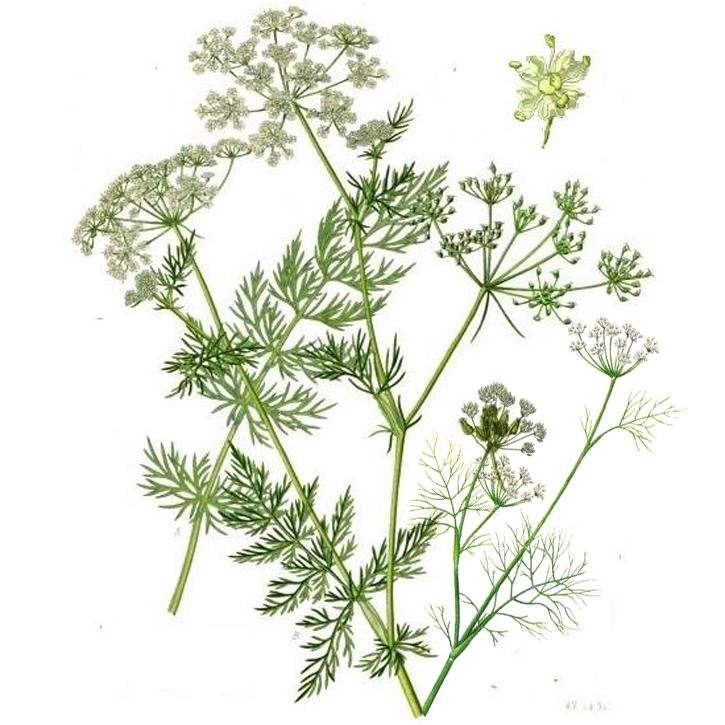The blooming period takes place between May and June. The fruit is anise-like flavor and should be harvested in July and August, during the second year of it is cycle (biennial). Fruits are harvested before they are completely mature and when turn grey brownish. They can be dried on trays in the sun or in the shadow and the seeds are removed from the ripe fruit.
It is indigenous to Turkestan. It was probably the Arabs who introduced it to Europe through Andalusia (Spain) around IX or X century, as by XI century it was already cultivated in the south part of Spain. Caraway spontaneously sprout in Europe and Northern Asia. It extends lengthwise the mountainous zones. Its cultivated in big and small plantations.
Real Farmacopea Española, 1997.
British Herbal Pharmacopoeia, 1983.
Herbal Drugs and Phytopharmaceuticals. Norman Grainger Bisset (Ed). Max Wichtl. CRC Press.1994.
Plantas Medicinales y Drogas Vegetales para infusión y tisana. Edición española a cargo de: Salvador Cañogueral, Roser Vila, Max Wichtl.1998.
Plantas Medicinales. Margarita Fernandez y Ana Nieto. Ed Universidad de Navarra. EUNSA 1982.
Fitoterapia: Vademecum de Prescripción. Plantas Medicinales. Colaboran: Asociación española de médicos naturistas. Colegio Oficial de Farmacéuticos de Vizcaya.
Matière Médicale (tomo II). RR Paris- H. Moyse. Masson 1981.
The Complete German Commission E Monographs. Therapeutic Guide To Herbal Medicines. Mark Blumenthal. American Botanical Council 1998.
Fitoterapia Aplicada. J.B. Peris, G. Stübing, B.Vanaclocha. Colegio Oficial de Farmacéuticos de Valencia 1995.
Pharmacognosy, Phytochemistry, Medicinal Plants. Jean Bruneton. Lavoisier Publishing.
Plantas Medicinales. El Dioscórides Renovado. Pio Font Quer.
Guía de Campo de las Flores de Europa. Oleg Polunin. Ediciones Omega S.A. Barcelona, 1977.
Pharmacognosy 9th edition. Varro E. Tyler – Lynn R. Brady – James E. Robbers.
Jean Bruneton. Farmacognosia. Fitoquímica Plantas Medicinales. 2ª Edición. 2001. Ed Acribia. S.A.
Bulletin officiel Nº 90/22 bis" del "Ministère des Affaires Sociales et de
French Public Health Code.
Benigni, R; Capra, C; Cattorini, P. Piante Medicinali. Chimica, Farmacologia e Terapia. Milano: Inverni & Della Beffa, 1962.
Bézanger-Beauquesne, L; Pinkas, M; Torck, M. Les Plantes dans
Bézanger-Beauquesne, L; Pinkas, M; Torck, M; Trotin, F. Plantes Médicinales des Regions Tempérées. Paris: Maloine, 1980.
